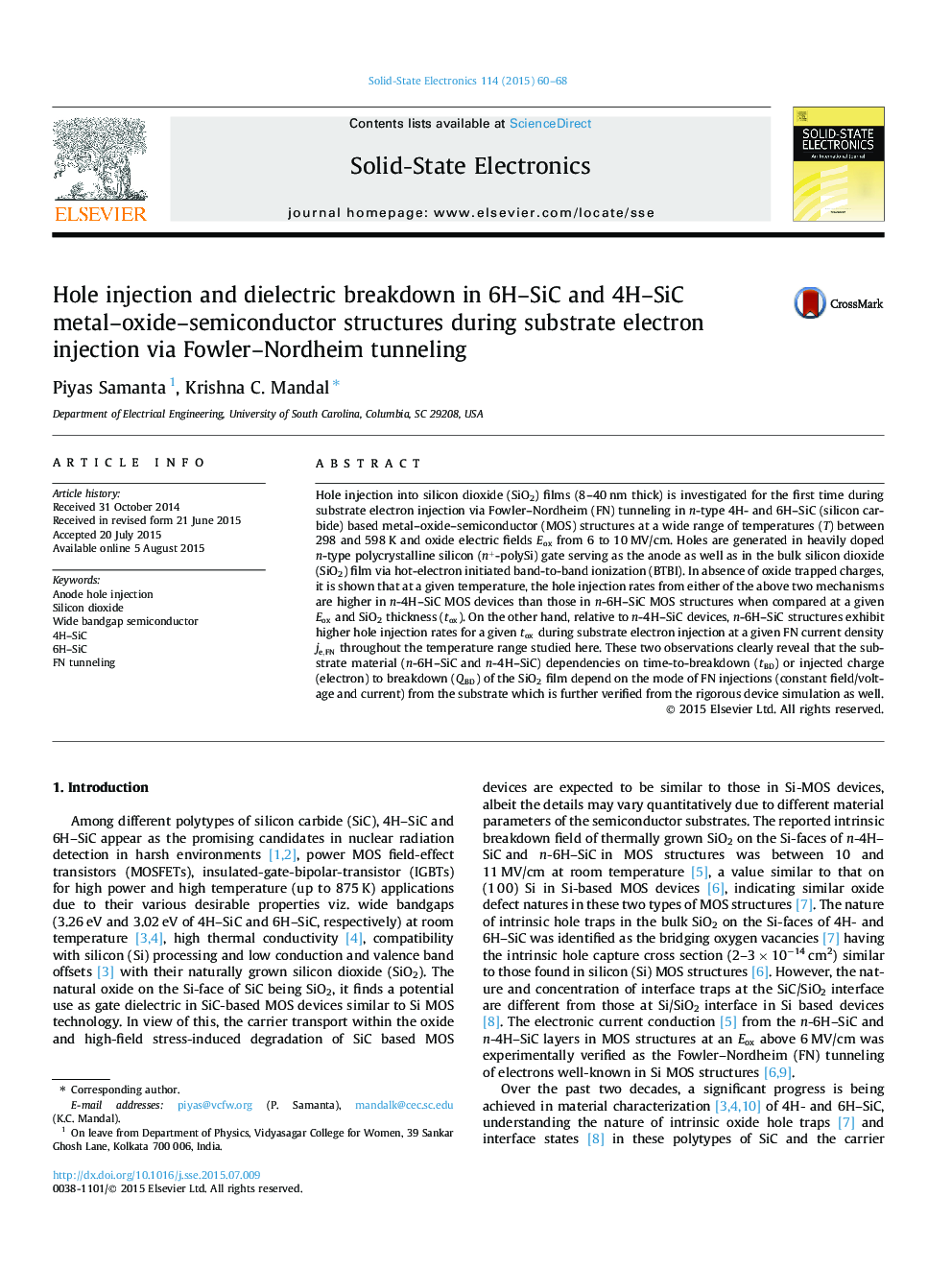| کد مقاله | کد نشریه | سال انتشار | مقاله انگلیسی | نسخه تمام متن |
|---|---|---|---|---|
| 747627 | 1462218 | 2015 | 9 صفحه PDF | دانلود رایگان |

• We model anode hole injection in 4H- & 6H–SiC MOS by substrate FN electron injection.
• We study oxide bandgap ionization under FN electron injection from n-4H- & n-6H–SiC.
• FN electron injections are considered at both constant Eox and current density jFN.
• 4H–SiC devices show shorter time-to-oxide breakdown than 6H–SiC MOS at a given Eox.
• 6H–SiC devices show higher oxide breakdown than 4H–SiC MOS at a given value of jFN.
Hole injection into silicon dioxide (SiO2) films (8–40 nm thick) is investigated for the first time during substrate electron injection via Fowler–Nordheim (FN) tunneling in n-type 4H- and 6H–SiC (silicon carbide) based metal–oxide–semiconductor (MOS) structures at a wide range of temperatures (T) between 298 and 598 K and oxide electric fields EoxEox from 6 to 10 MV/cm. Holes are generated in heavily doped n -type polycrystalline silicon (n+n+-polySi) gate serving as the anode as well as in the bulk silicon dioxide (SiO2) film via hot-electron initiated band-to-band ionization (BTBI). In absence of oxide trapped charges, it is shown that at a given temperature, the hole injection rates from either of the above two mechanisms are higher in n-4H–SiC MOS devices than those in n-6H–SiC MOS structures when compared at a given EoxEox and SiO2 thickness (toxtox). On the other hand, relative to n-4H–SiC devices, n-6H–SiC structures exhibit higher hole injection rates for a given toxtox during substrate electron injection at a given FN current density je,FNje,FN throughout the temperature range studied here. These two observations clearly reveal that the substrate material (n-6H–SiC and n -4H–SiC) dependencies on time-to-breakdown (tBDtBD) or injected charge (electron) to breakdown (QBDQBD) of the SiO2 film depend on the mode of FN injections (constant field/voltage and current) from the substrate which is further verified from the rigorous device simulation as well.
Journal: Solid-State Electronics - Volume 114, December 2015, Pages 60–68